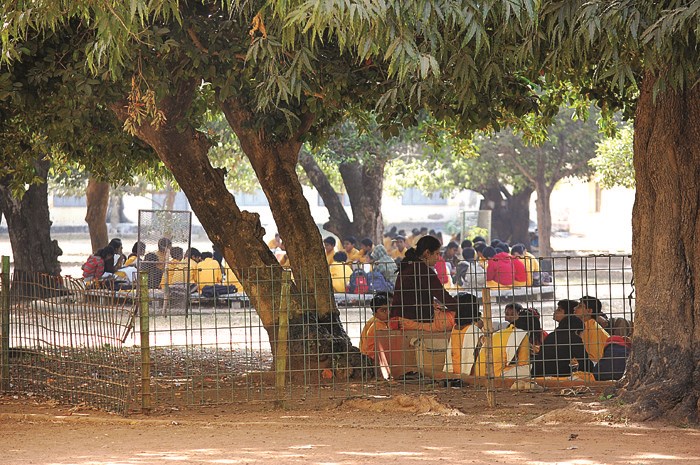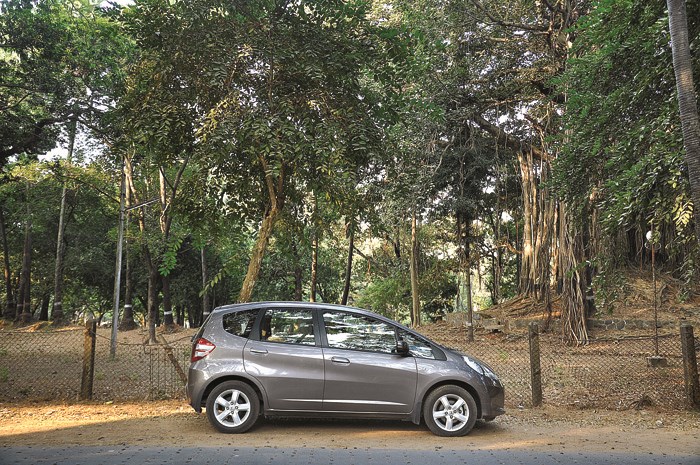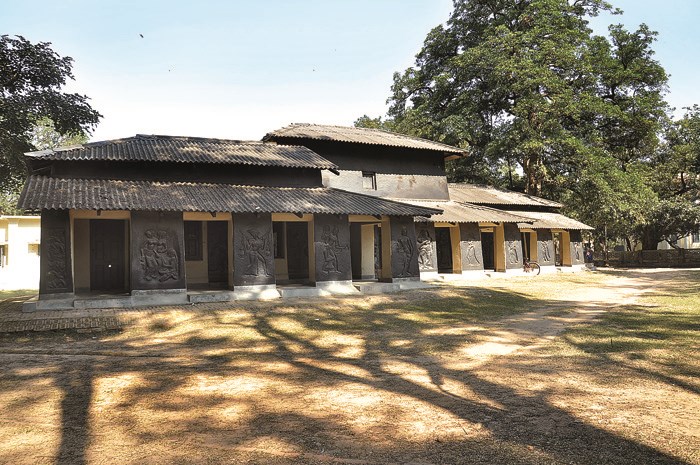Discover India: Santiniketan
A journey to Santiniketan; the abode of peace.
Published On Apr 24, 2012 08:02:00 PM
36,018 Views
Follow us onSantiniketan, about 200km away from Kolkata, is a place that’s close to every Bengali’s heart. It is a place that’s associated with Rabindranath Tagore who reshaped the literature and music of Bengal and was the first non-European Nobel Laureate, winning the 1913 prize in Literature. Tagore is also perhaps the only person in the world to have penned two national anthems: our own “Jana Gana Mana” and Bangladesh’s “Amar Shonar Bangla”.
The road to Santiniketan
To get to Santiniketan take the NH2 Durgapur Expressway from Kolkata. This is a busy truck corridor and though the road is nicely laid and wide, the lumbering trucks can reduce your speed a fair bit. Make a stop at Shaktigarh on the side of the road for their famous langcha sweets. Once you reach Panagarh, the road narrows down and traffic is a crawl. Turn right from Darjeeling More to SH14 towards Illambazaar.
After the highway crosses the Ajay river, take the road to the right at Illambazaar and proceed towards Bolpur. Once past Illambazaar the road gets better though it’s a narrow two-laner all the way to Santiniketan. At the Santiniketan-Sriniketan junction (also called Surul Mor) take the road to the left. Drive with extreme care through the narrow-lanes in the town and do not honk since this is an educational zone. Once in Santiniketan we advise you to ditch the car and use a cycle rickshaw to explore around.
What do you do once you reach Santiniketan? The four main places to visit are the Ashram Complex, Uttarayana Complex, the institutes of Visva Bharati and Sriniketan.
Ashram Complex
One of the earliest structures built by Debendranath Tagore was the Santiniketan Bari (house) and the beautiful stained-glass temple. Both structures are important in their association with the founding of Santiniketan and the universal spirit associated with the revival and reinterpretation of religious ideals in Bengal and India.
The other important structures built later, after Rabindranath moved to the site of Santiniketan, are the Patha-Bhavana, with beautiful frescoes by Nandalal Bose and his students, and Natun-Bari, built in 1902 by the Poet for his family. It now houses the Mrinalini Ananda Pathsala, named after Tagore’s wife Mrinalinidevi. Dehali was built in 1904 and Rabindranath lived here for a while.
Uttarayana Complex
Uttarayana is an enclave of Rabindranath’s own houses built over the last three decades of his life and each of them has memorabilia and photographs from Tagore’s life. The lighting in some of these places is poor too. Surely Bengal’s beloved Gurudev deserves much better. Konark, originally a mud house, was the earliest dwelling that Rabindranath built for his own seclusion from activity to provide a place for his personal work.
The construction of Shyamali was an experiment. Rabindranath wanted to see if instead of a thatched roof, which was always vulnerable to fire hazards, a permanent mud roof could be built. Surendranath Kar prepared the architectural plan and Nandalal Bose prepared the visual perspective based on the Borobudur style. The sculpting on either side of the main door and on the eastern corner was by the great adivasi artist Ramkinkar Baij. Gandhiji and his wife Kasturba stayed as guests in this house.
Punascha, meaning postscript, suggests the poet’s change of mind. This house was built on the eastern side of Shyamali. He lived in this house only for a short while but it was here that he created most of his paintings.
Udichi is the last house built for Rabindranath. He felt claustrophobic, he said, and wanted a room to be constructed on four pillars. However, changes were gradually made according to the owner’s needs. He conducted poetry classes on the ground floor.
The most imposing house in Uttarayana is Udayan. Udayan, unlike the other houses, was conceived by his son Rathindranath, not the poet. When Rabindranath came to live in Konark, Rathindranath and his wife lived
in an outhouse by its side. Starting from these modest and functional rooms, the elaborate structure of Udayan was gradually evolved. Udayan has many suites of rooms, each on a different level, which gives this house its individuality.
Institutes of Visva Bharati
Visva Bharati functioned as a Centre for Culture with exploration into arts, language, humanities and music, and these are reflected in the diverse institutes. You’ll find institutes for Hindi studies, Hindi Bhavan; Sino-Asian studies, Cheena Bhavan; centre for humanities.
Make sure to visit the Kalo Bari or Black House at Kala Bhavan. It’s a mud structure with coal-tar finish and sculpture panels. The relief works on the walls are by stalwarts like Ramkinkar and Prabhas Sen. Usually the final-year students of Visva Bharati stay here. For art lovers there are murals and paintings on Cheena and Hindi Bhavan, created by illustrious artists like Benodebehari Mukhopadhyay, Nandalal Bose, Surendranath Kar and Somnath Hore, with active involvement of the students.
Sriniketan
Sriniketan is an Institute for Rural Reconstruction founded in 1922 with Leonard Elmhirst as its first Director. Of special interest here is the Surul Kuthibari, the house often used by the Poet as a retreat. In front of this building on a wall, Nandalal created a mural depicting Halakarshana, a ploughing festival introduced by Rabindranath to honour the tiller of the soil.
Other than Tagore
In Santiniketan, don’t miss out on Bengali food, especially fresh water fish. While there are many eateries here, we would suggest a trip down to a place called Vanalakshmi Unmesh Samiti. It’s about a 20-minute drive from Santiniketan in a place called Dwaranda on the road to Illambazaar.
Santiniketan is also a good place to shop for handicrafts like batik prints, leather craft, kantha stitchwork, bamboo toys, handmade paper, dokra brasswork and locally handwoven cotton. You could check out Amar Kutir in Sriniketan where you can not only buy the goods but also mingle with the artisans at their workshops. Or, if you are here on a Saturday, go to the Khoai Mela that starts at about three in the afternoon and goes on till sunset.
Copyright (c) Autocar India. All rights reserved.






Comments
Member Login
Personal Details
No comments yet. Be the first to comment.